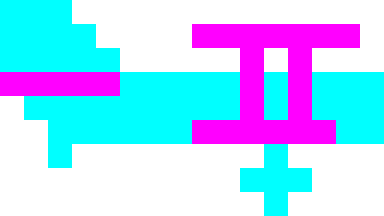 SDL Sopwith
SDL Sopwith
[
Play in browser |
Download |
Screenshots |
Github Page |
Discord |
History |
Links
]
History of Sopwith part 4: the DOS versions
[ Introduction | Imaginet | Sopwith escapes | DOS versions | On the Internet ]
Sopwith was (originally) an MS-DOS game and several different versions are known to exist. These different versions contain different features as the game was expanded and developed. This page documents these different versions.
Fans have developed their own names for these different versions, specifically those known as “Sopwith 1” and “Sopwith 2”. However, these names are not official, and do not appear anywhere in the program. So they are not true “sequels”, only different versions of the same game.
Features
The following table gives a quick rundown of the various features of the different versions:
| 1 | 1.5 | 2 | Network Edition | Author’s Edition | |
|---|---|---|---|---|---|
| Solid ground | ✓ | ||||
| Speed depends on CPU | ✓ | ✓ | |||
| Enemy planes drop bombs | ✓ | ||||
| Oxen and birds | ✓ | ✓ | ✓ | ||
| Explosions leave debris | ✓ | ✓ | ✓ | ||
| Novice mode | ✓ | ✓ | |||
| Missiles and starbursts | ✓ | ✓ | |||
| Wounded planes | ✓ | ✓ | |||
| Window “splats” | ✓ | ✓ | |||
| Imaginet multiplayer | ✓ | ✓ | ✓ | ✓ | |
| 640x200 “hi res” mode | ✓ (-h) |
✓ | ✓ | ✓ | |
| Async (serial line) multiplayer | ✓ | ✓ | ✓ | ||
| Joystick support | ✓ | ✓ | ✓ | ✓ | |
| Compiler | Computer Innovations C | CIC | CIC | Microsoft C | MSC |
Sopwith 1
The oldest version, released in 1984, was the original demo for the Imaginet networking system. Its main distinguishing feature is the use of solid white ground, which was later replaced by a single line (to improve performance). To avoid having to redraw the screen, the “camera” only moves sometimes.
Speed is CPU-dependent, so the game runs too fast on machines faster
than the original IBM XT unless a utility like MOSLO is used (or the
number of cycles adjusted to a low number on emulators like DOSbox.
As with later versions, this version supports running the game in 640x200
CGA “hi res” mono mode, but the command line argument to enable it is -h;
this was changed to -w in later versions.
The musical theme to this version is
Merrily We Roll Along
better known as the theme song for the Warner Brothers Merry Melodies
cartoon. However, the music doesn’t play on the title screen unless Sopwith
is run with the -s command line parameter. Interestingly, David Clark
does not remember the game ever having
this music.
The multiplayer feature was thought to be unusable without the original Imaginet hardware, but has recently been made to work by having multiple instances of QEMU sharing a floppy disk image.
A review was published of this version in the book “Free and user supported software for the IBM PC”; you can read it here.
- Download (.zip)
- Documentation for this version.
- Play emulated version on archive.org.


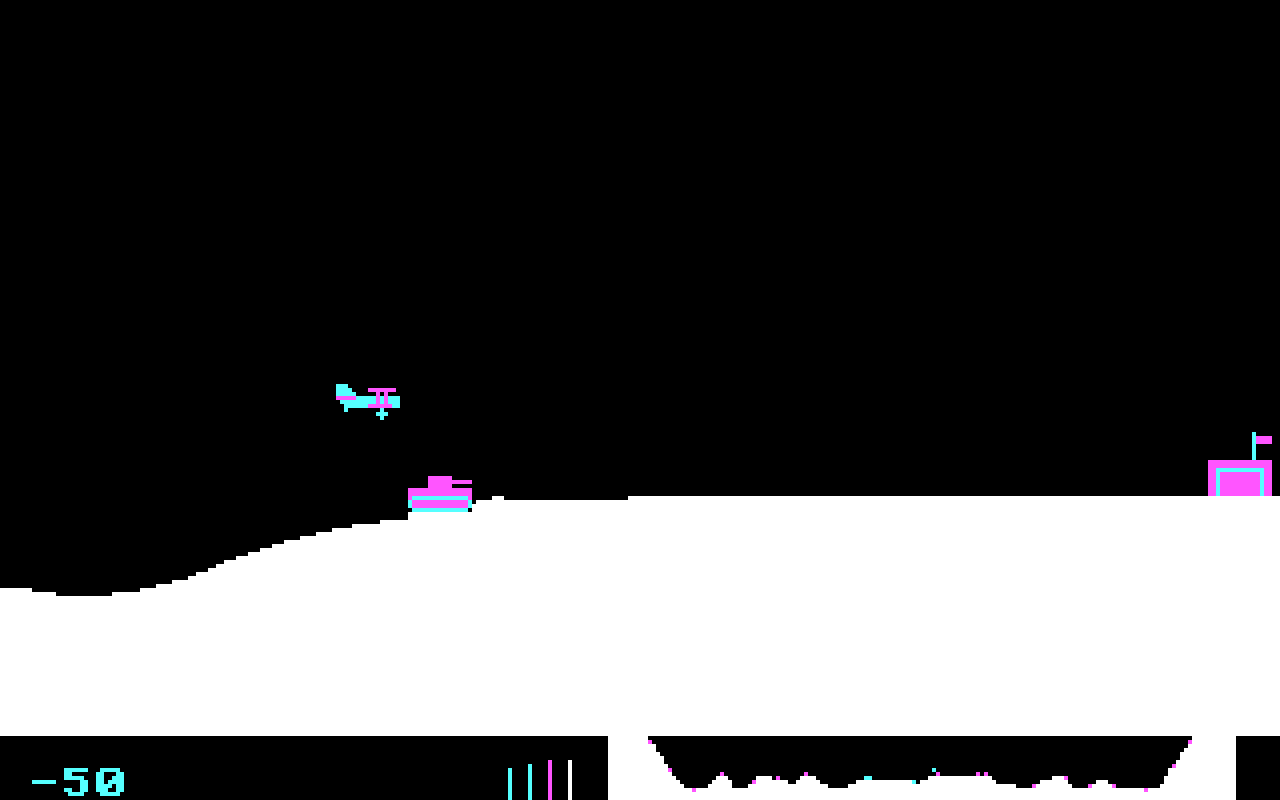
Sopwith 1.5
I recently came across this version, which I’m calling Sopwith 1.5 since its development clearly sits between the better-known Sopwith 1 and 2. In my opinion this is perhaps best described as a beta version of the later Sopwith 2 - it is unique in that computer planes drop bombs, a feature that never appeared in any other version and does not appear to work very well.
Solid ground has been replaced by a line at this point in development, and joystick support added. However, later changes are not yet present, like oxen and birds, or explosions leaving debris. It still runs at the speed of the CPU, like Sopwith 1, so the same slowdown techniques are needed to make it playable.
By this version the theme music has been changed to The U.S. Air Force (aka Wild Blue Yonder), the official song of the US Air Force. This music is used in Sopwith 2 and all future versions.
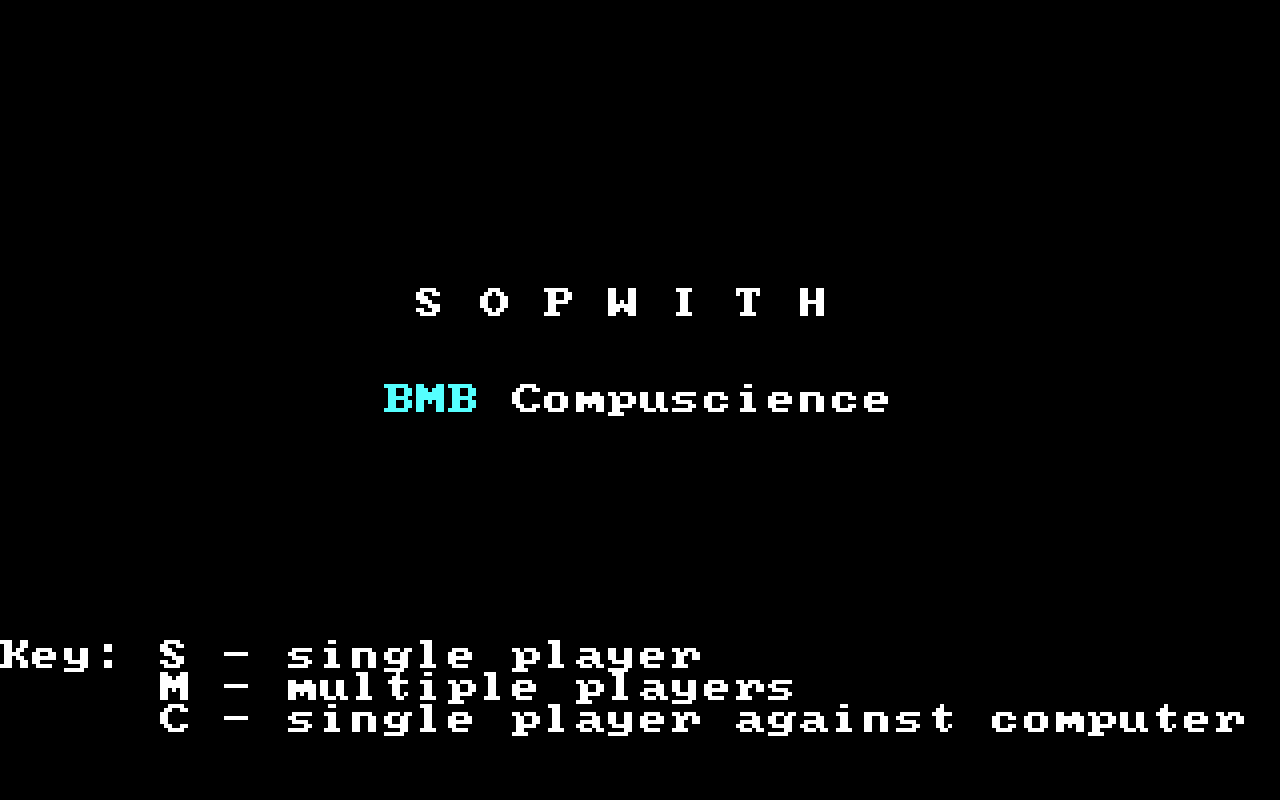

Sopwith 2
Perhaps the best-known of the DOS versions, this was a significant step forward over the original. Note that the name “Sopwith 2” is a fan invention to distinguish it from the older version, and the game does not describe it with that name.
In terms of gameplay the most immediately noticeable feature is the addition of oxen and birds to the game. More subtle changes include tweaks to how explosions work - debris is longer-lived and provides more of a hazard to the player. Speed is now CPU independent, the game supports IBM compatible joysticks, and serial line networking, although this latter feature is still unusable because it also requires a proprietary BMB driver.
The multiplayer feature has recently been made usable through the Imaginot adapter program.
- Download (.zip)
- Documentation for this version.
- Play emulated version on archive.org.

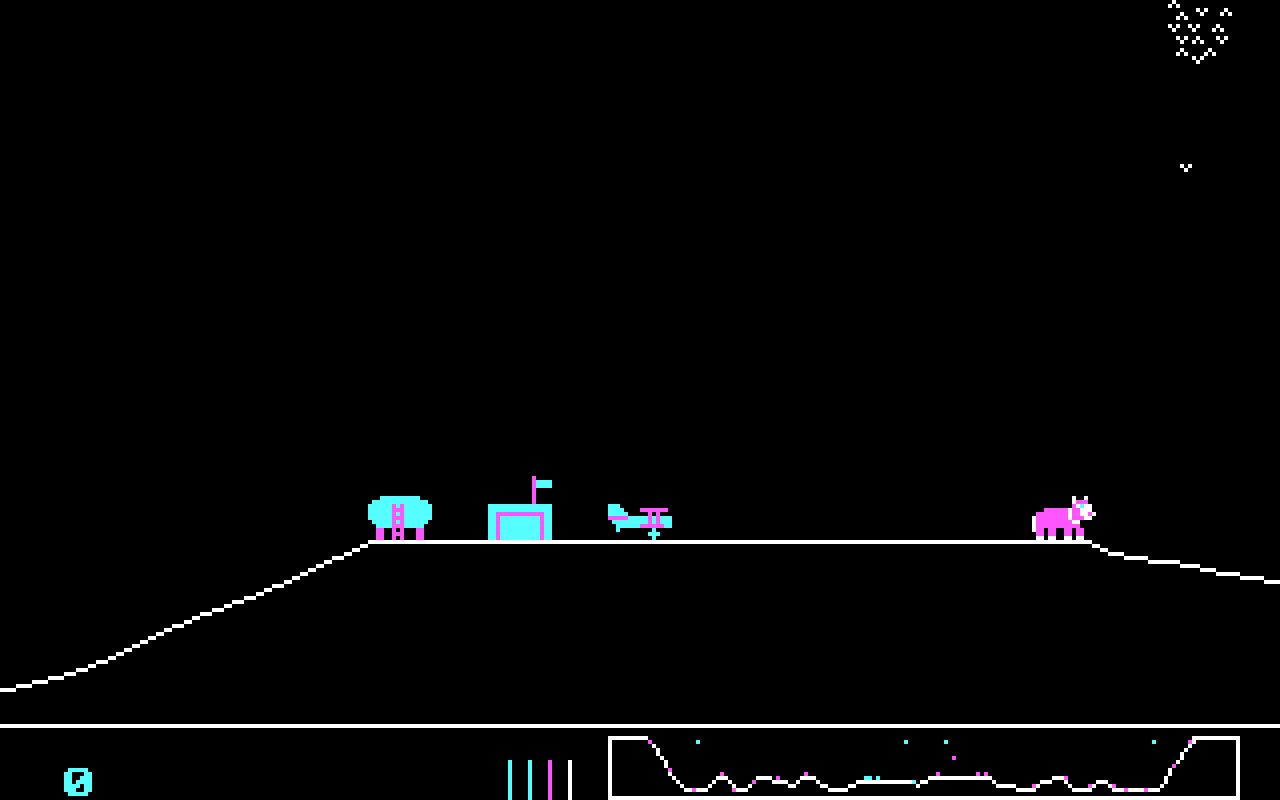
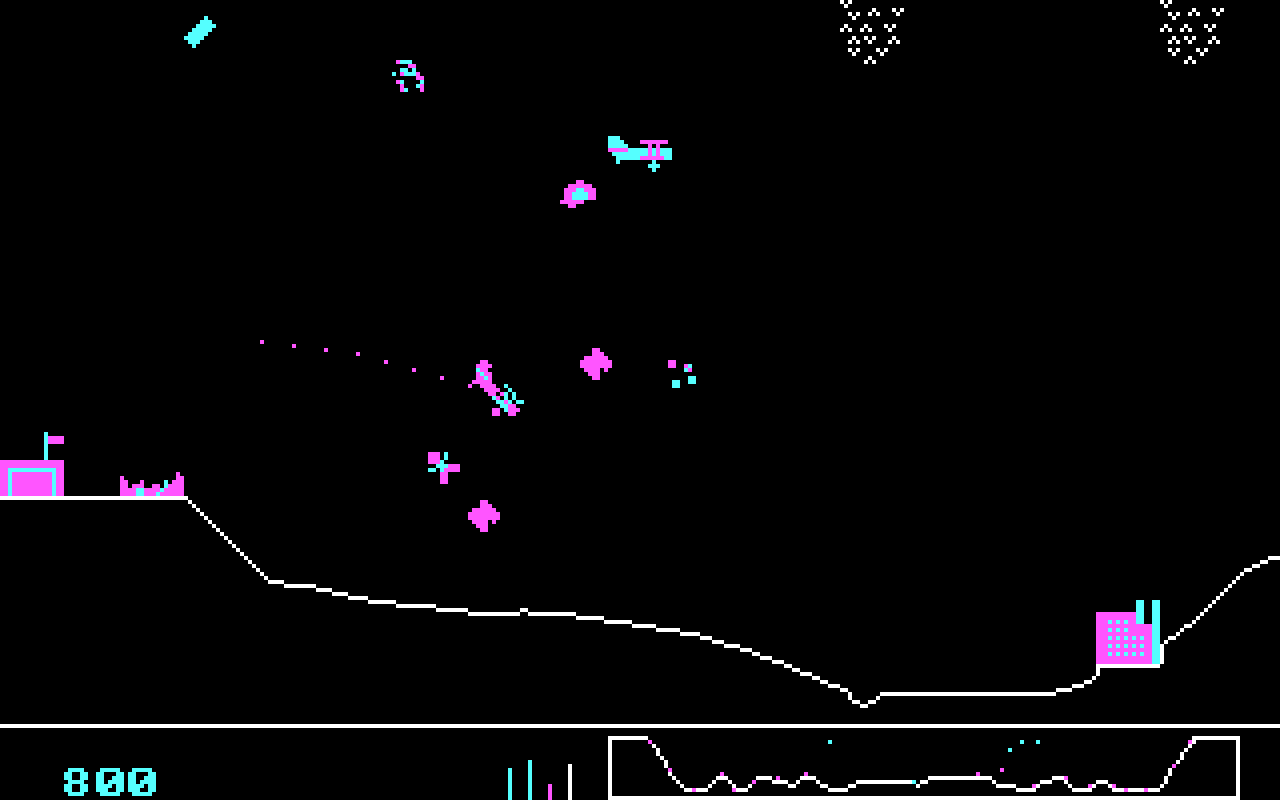
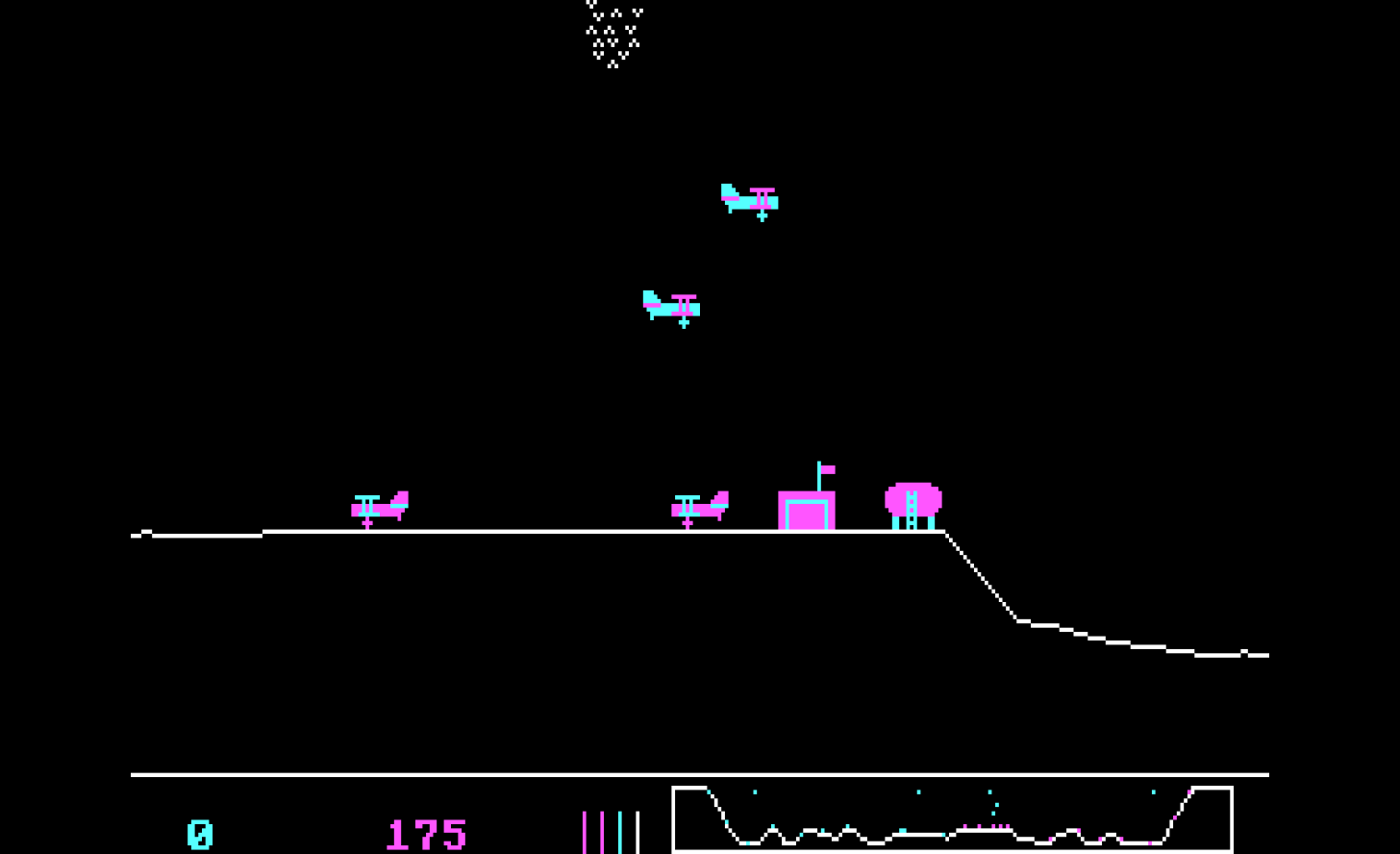
The Network Edition
Released by the author David L. Clark in the late ’90s, the main features are the addition of novice mode and wounded planes. Novice mode in particular is convenient since it makes it impossible to stall the plane, a common stumbling block for new players.
A controversial feature added in this release is guided missiles and
starbursts (chaff/flares) which are presumably intended to make multiplayer
more fun (they have to be enabled with the -x command line parameter).
The missiles are dumb missiles when fired by the player but heat-seeking
when fired by computer planes, making the single player experience almost
impossible.
Some more subtle changes: oil tank explosions were made much smaller, bird strikes no longer result in an explosion, and computer planes avoid crashing into oxen.
A cute addition is that of window “splats”: bird strikes result in a splatted bird appearing on the screen, and getting hit by a bullet results in similar broken glass cracks. Perhaps the funniest of all occurs after flying through an ox: the entire screen turns pink from blood.
Drivers are available that can be used to play this version and the Author’s Edition over a serial line; see the download link below. These were originally posted by the user “per” on a thread on the VCFEd forums. These drivers apparently (?) do not work with Sopwith 2. A driver file is also included for the original BMB network hardware, but you are unlikely to be able to get this to work unless you have original BMB hardware. Under DOSbox you will need the DRVLOAD program to be able to load the drivers.


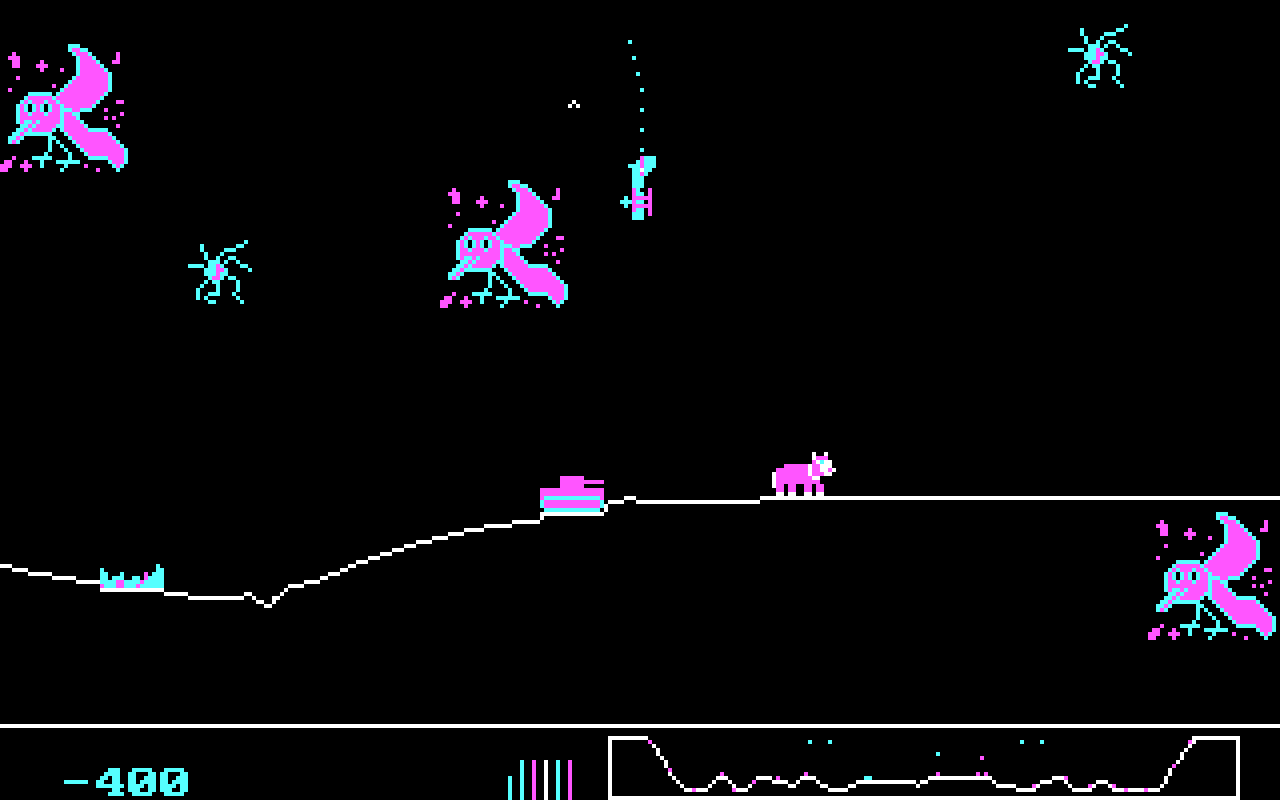
The Author’s Edition
Largely identical to the Network Edition, but the original BMB networking has been removed. This was the basis for the source code release by David Clark.
The code was originally released in 2000 under a non-commercial license, but was later re-released under the GPL in 2003. There are some very minor differences between the two source releases. A GPL blurb was added to the program help text (as the GPL itself recommends doing), and the copyright year on the title screen was updated. The earlier release described itself as “Distribution Version” rather than “The Author’s Version”; David has specifically requested that people do not use that name for their versions.
The Author’s Edition is the only version that is truly free and open source software.
- Download (.zip)
- Download source code (original non-free license, .zip)
- Download source code (GPL re-release, .zip)
- Play emulated version on archive.org.

Next: On the Internet
